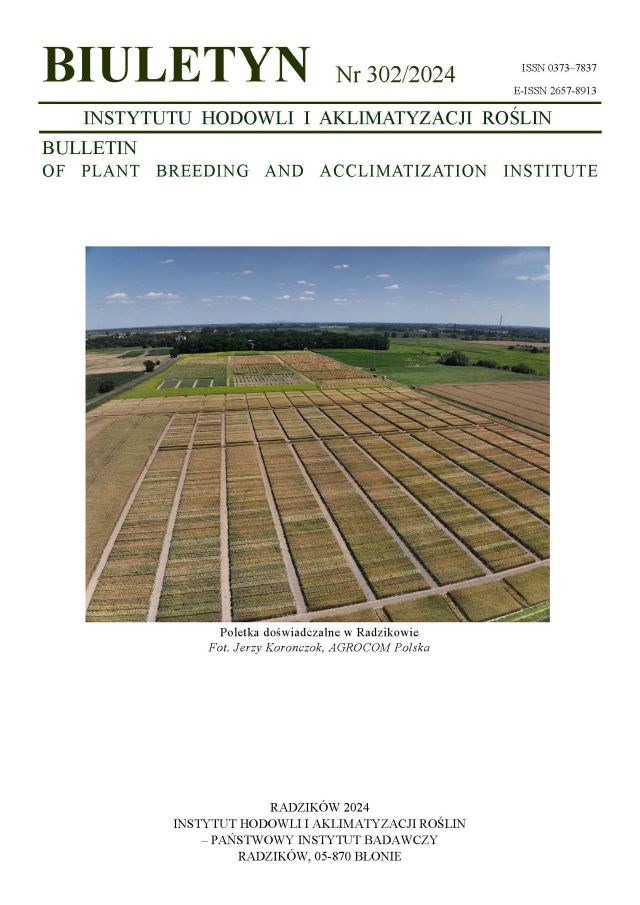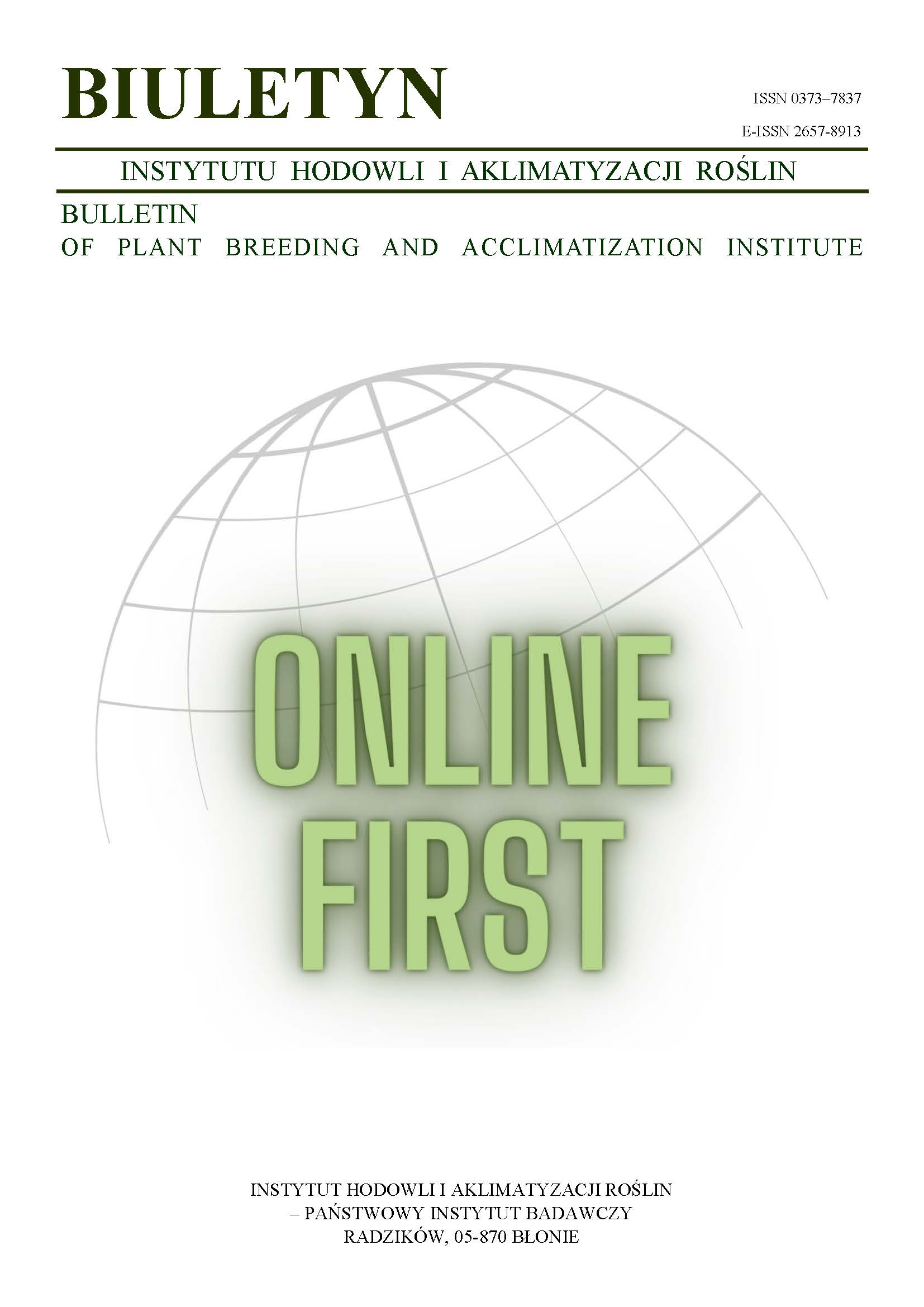Present global trends for cereal quality requirements, especially for wheat in relation to end-uses
Danuta Boros
d.boros@ihar.edu.plPracownia Oceny Jakości Produktów Roślinnych, Zakład Biochemii i Fizjologii Roślin, Instytut Hodowli i Aklimatyzacji Roślin, Radzików (Poland)
Abstract
Present global trends for cereal quality requirements are discussed, especially for wheat in relation to end-uses, indicating the direction of breeding and selecting works within the group of the most strategic cultivated crops. There are two new ways of cereal grain utilization, as a rich source of bioactive substances with promoting effect on human health, first of all dietary fibre and its constituents and as a raw material for the production of bioethanol as a biofuel. In the last years many possibilities of improving end-use quality of cereals have been opened due to utilization of molecular techniques of genetic engineering for a transgene introduction. The improvement of cereal quality traits is still possible by exploiting the methods of conventional breeding. Donors of desirable traits can be searched within varieties, presently cultivated and old ones stored in gene banks, as well as among wild and primitive forms.
Keywords:
cereal grains, end-uses, sources of dietary fibre and other bioactive substances, quality improvement, qualitative breedingReferences
AACC Report. 2001. The definition of dietary fibre. Report of the Dietary Fibre Committee to the Board Directors of the American Association of Cereal Chemists. Cereal Foods World. 46: 112 — 126.
Google Scholar
Åman, P., Hesselman, K. and Tilly, A.H. 1985. The variation in chemical composition of swedish barleys. J. Cereal Sci. 3: 73 — 77.
DOI: https://doi.org/10.1016/S0733-5210(85)80035-7
Google Scholar
Bach Knudsen K.E. 2001. The nutritional significance of ”dietary fibre” analysis. Anim. Feed Sci. Technol. 90: 3 — 20.
DOI: https://doi.org/10.1016/S0377-8401(01)00193-6
Google Scholar
Boros D., Rek-Ciepły B., Cyran M. 1996. A note on the composition and nutritional value of hulless barley. J. Anim. Feed Sci. 5: 417 — 424.
DOI: https://doi.org/10.22358/jafs/69619/1996
Google Scholar
FAO Database, 2003.
Google Scholar
Gebhard E. 2004. Cereals for Technical Purposes. Abstracts of the CICSA Workshop on: Improvement of tolerance to environmental stress and quality in cereals. Radzików, March 25 – 27, pp. 30 — 31.
Google Scholar
Nyman M., Siljestrom M., Redersen B., Bach Knudsen K. E., Asp N. G., Johansson C. G., Eggum, B. O. 1984. Dietary fiber content and composition in six cereals at different extraction rates. Cereal Chem. 61: 14 — 19.
Google Scholar
Oscarsson M., Andersson R., Salomonsson A. C., Åman, P. 1996. Chemical composition of barley samples focusing on dietary fibre components. J. Cereal Sci. 24: 161 — 170.
DOI: https://doi.org/10.1006/jcrs.1996.0049
Google Scholar
Pomeranz Y. 1983. Buckwheat: structure, composition and utilization. CRC Crit. Rev. Food Chem. 19: 213 — 258.
DOI: https://doi.org/10.1080/10408398309527376
Google Scholar
Rakowska M., Boros D., Gąsiorowska M. 1992. Quality traits of the grain of Polish varieties of triticale. Triticale Topics. 8: 4 — 9.
Google Scholar
Rybka K., Boros D., Raczyńska-Bojanowska K. 1992. Comparative studies on the components of cereal grain that are undigestible in vitro. J. Cereal Sci. 15: 295 — 303.
DOI: https://doi.org/10.1016/S0733-5210(09)80127-6
Google Scholar
Schweizer T.F., Wursch P. 1979. Analysis of dietary fibre. J. Sci. Food Agric. 30: 613 — 619.
DOI: https://doi.org/10.1002/jsfa.2740300610
Google Scholar
Smulikowska S. 1998. Wartość pokarmowa żyta, pszenżyta i pszenicy w żywieniu drobiu. Rozprawa habil. IFiŻZ PAN, Jabłonna.
Google Scholar
Smulikowska S., Nguyen V.C. 2001. A note on variability of water extract viscosity of rye grain from north-east regions of Poland. J. Anim. Feed Sci. 10: 687 — 693.
DOI: https://doi.org/10.22358/jafs/68020/2001
Google Scholar
Willett W. 2001. New food pyramid. In: Eat, drink and be healthy. Simon & Schuster (ed.), New York.
Google Scholar
Authors
Danuta Borosd.boros@ihar.edu.pl
Pracownia Oceny Jakości Produktów Roślinnych, Zakład Biochemii i Fizjologii Roślin, Instytut Hodowli i Aklimatyzacji Roślin, Radzików Poland
Statistics
Abstract views: 104PDF downloads: 28
License
Copyright (c) 2005 Danuta Boros

This work is licensed under a Creative Commons Attribution-ShareAlike 4.0 International License.
Upon submitting the article, the Authors grant the Publisher a non-exclusive and free license to use the article for an indefinite period of time throughout the world in the following fields of use:
- Production and reproduction of copies of the article using a specific technique, including printing and digital technology.
- Placing on the market, lending or renting the original or copies of the article.
- Public performance, exhibition, display, reproduction, broadcasting and re-broadcasting, as well as making the article publicly available in such a way that everyone can access it at a place and time of their choice.
- Including the article in a collective work.
- Uploading an article in electronic form to electronic platforms or otherwise introducing an article in electronic form to the Internet or other network.
- Dissemination of the article in electronic form on the Internet or other network, in collective work as well as independently.
- Making the article available in an electronic version in such a way that everyone can access it at a place and time of their choice, in particular via the Internet.
Authors by sending a request for publication:
- They consent to the publication of the article in the journal,
- They agree to give the publication a DOI (Digital Object Identifier),
- They undertake to comply with the publishing house's code of ethics in accordance with the guidelines of the Committee on Publication Ethics (COPE), (http://ihar.edu.pl/biblioteka_i_wydawnictwa.php),
- They consent to the articles being made available in electronic form under the CC BY-SA 4.0 license, in open access,
- They agree to send article metadata to commercial and non-commercial journal indexing databases.
Most read articles by the same author(s)
- Danuta Boros, Damian Gołębiewski, Components determining the nutritive and functional values of oat and its relation between hulled and dehulled grains , Bulletin of Plant Breeding and Acclimatization Institute: No. 286 (2019): Special issue
- Magdalena Wiśniewska, Danuta Boros, Józef Zych, Nutritional value of selected mixtures of spring cereals with legumes , Bulletin of Plant Breeding and Acclimatization Institute: No. 289 (2020): Regular issue
- Damian Gołębiewski , Danuta Boros, Kinga Gołębiewska, Anna Fraś , Nutritive and bioactive potential of oat cultivars , Bulletin of Plant Breeding and Acclimatization Institute: No. 287 (2019): Special issue
- Lech Boros, Anna Wawer, Magdalena Wiśniewska, Danuta Boros, Effect of genotype and contrasting climate conditions on physical and chemical characteristics of soybean (Glycine max L. Merrill) , Bulletin of Plant Breeding and Acclimatization Institute: No. 296 (2021): Regular issue
- Danuta Boros, Alkylresorcinols of cereal grains — their importance in food and feed , Bulletin of Plant Breeding and Acclimatization Institute: No. 277 (2015): Regular issue
- Danuta Boros, Magdalena Wiśniewska, Marlena Gzowska, Józef Zych, Edward Gacek, Improvement of the spring wheat nutritional value by sowing variety mixtures , Bulletin of Plant Breeding and Acclimatization Institute: No. 289 (2020): Regular issue
- Kinga Myszka, Beata Kamińska, Anna Fraś, Magdalena Ploch, Danuta Boros, Dumas method as an alternative approach for determining protein contents of plant products — comparative study with Kjeldahl method , Bulletin of Plant Breeding and Acclimatization Institute: No. 260/261 (2011): Regular issue
- Danuta Boros, Kinga Gołębiewska, Components determining the low protein digestibility of meal obtained from seeds of winter rapeseed , Bulletin of Plant Breeding and Acclimatization Institute: No. 286 (2019): Special issue
- Damian Gołębiewski, Kinga Myszka, Anna Fraś, Danuta Boros, Janusz Burek, Dariusz R. Mańkowski, Evaluation of genetic and environmental variability of traits that determine malting quality of spring barley lines from preliminary trials in 2012 , Bulletin of Plant Breeding and Acclimatization Institute: No. 268 (2013): Regular issue
- Anna Fraś, Danuta Boros, Influence of environmental conditions on the variability of dietary fibre content in winter wheat grain , Bulletin of Plant Breeding and Acclimatization Institute: No. 277 (2015): Regular issue














